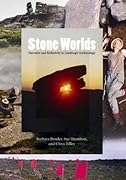<< News >> BBC funded excavation at Stonehenge
Submitted by Andy B on Friday, 11 July 2008 Page Views: 6307
StonehengeCountry: England County: Wiltshire Type: HengeInternal Links:
The first excavation inside the ring at Stonehenge in more than four decades started on the 31st March 2008. The two-week dig was to try and establish, once and for all, some precise dating for the creation of the monument. It also targeted the significance of the smaller bluestones that stand inside the giant sarsen pillars.
Researchers believe these rocks, brought all the way from Wales, hold the secret to the real purpose of Stonehenge as a place of healing.
The excavation at the 4,500-year-old UK landmark is being funded by the BBC. The work will be filmed for a special Timewatch programme to be broadcast in the autumn.
The researchers leading the project are two of the UK's leading Stonehenge experts - Professor Tim Darvill, of the University of Bournemouth, and Professor Geoff Wainwright, of the Society of Antiquaries.
Read more at BBC News and you can follow the dig online.
Note: Chris Watkins describes his experiences working on the Stonehenge excavation earlier this year, see the latest comment on this page






 We would like to know more about this location. Please feel free to add a brief description and any relevant information in your own language.
We would like to know more about this location. Please feel free to add a brief description and any relevant information in your own language. Wir möchten mehr über diese Stätte erfahren. Bitte zögern Sie nicht, eine kurze Beschreibung und relevante Informationen in Deutsch hinzuzufügen.
Wir möchten mehr über diese Stätte erfahren. Bitte zögern Sie nicht, eine kurze Beschreibung und relevante Informationen in Deutsch hinzuzufügen. Nous aimerions en savoir encore un peu sur les lieux. S'il vous plaît n'hesitez pas à ajouter une courte description et tous les renseignements pertinents dans votre propre langue.
Nous aimerions en savoir encore un peu sur les lieux. S'il vous plaît n'hesitez pas à ajouter une courte description et tous les renseignements pertinents dans votre propre langue. Quisieramos informarnos un poco más de las lugares. No dude en añadir una breve descripción y otros datos relevantes en su propio idioma.
Quisieramos informarnos un poco más de las lugares. No dude en añadir una breve descripción y otros datos relevantes en su propio idioma.